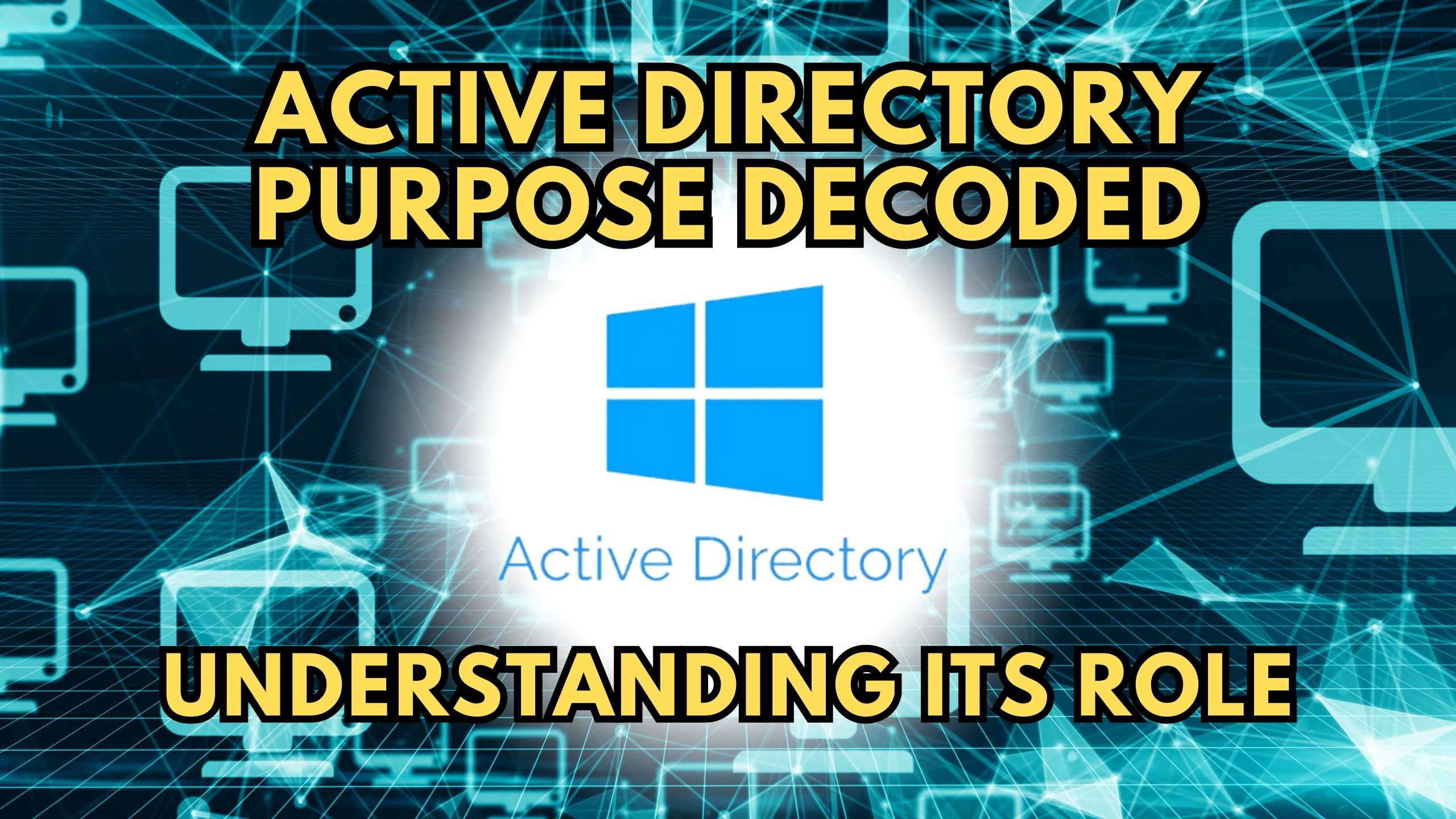Active Directory Purpose Decoded: Understanding Its Role
-


Active Directory Purpose Decoded: Understanding Its Role
In the realm of IT infrastructure, Active Directory (AD) plays a pivotal role, serving as a linchpin for organizational network management. In this comprehensive guide, we will decode the purpose of Active Directory, unraveling its multifaceted functions and shedding light on its significance in modern computing.
1. The Foundation of Identity Management
Active Directory stands as the cornerstone of identity management within a networked environment. It provides a centralized database for storing and managing user identities, enabling seamless authentication and authorization processes. This centralized approach enhances security by allowing administrators to regulate access based on user roles and permissions.
2.User and Group Management
One of the key roles of Active Directory is user and group management. It simplifies the administration of user accounts, ensuring efficient onboarding and offboarding processes. AD’s group management capabilities streamline the assignment of permissions and policies, making it a crucial tool for maintaining a secure and organized network.
3. Resource Allocation and Policy Enforcement
Active Directory facilitates resource allocation and policy enforcement across the network. By defining group policies, administrators can enforce security settings, control user configurations, and ensure compliance with organizational standards. This granular control enhances the overall security posture of the network.
4. Seamless Integration with SaaS Products
To extend the capabilities of Active Directory, organizations often leverage SaaS products that seamlessly integrate with AD. Here are five relevant SaaS products:
- Okta: Okta provides Identity as a Service (IDaaS), integrating smoothly with Active Directory to enhance identity and access management across various applications.
- OneLogin: OneLogin streamlines access management by connecting with Active Directory, offering a unified solution for authentication and authorization.
- JumpCloud: JumpCloud extends Active Directory’s reach to non-Windows environments, providing a cloud-based directory platform for user and device management.
- Azure AD: Microsoft’s Azure Active Directory complements on-premises AD, offering cloud-based identity and access management services.
- Auth0: Auth0 integrates seamlessly with Active Directory, providing a comprehensive identity platform that enhances authentication and authorization processes.
5. Querying Active Directory’s Purpose: What Google Asks
Understanding the purpose of Active Directory involves addressing queries from Google, especially, “What is the purpose of Active Directory?” Active Directory serves as the backbone for centralized identity management, ensuring secure authentication, streamlined user and group management, resource allocation, and seamless integration with various applications.
Conclusion
In conclusion, Active Directory’s purpose is far-reaching, spanning identity management, user and group administration, resource allocation, and integration with SaaS products. This guide has unveiled the multifaceted role of Active Directory in modern IT infrastructures, emphasizing its significance for organizations seeking efficient and secure network management.
Revolutionize Your Network Management with Subscribed.fyi!
Ready to streamline your network management strategy? Subscribed.fyi offers an all-in-one solution for managing your SaaS stack, helping you unlock exclusive deals and enhance your IT infrastructure. Sign up for free and discover the secret to navigating the unique dynamics of SaaS subscriptions while saving big on essential tools!
Relevant Links:





